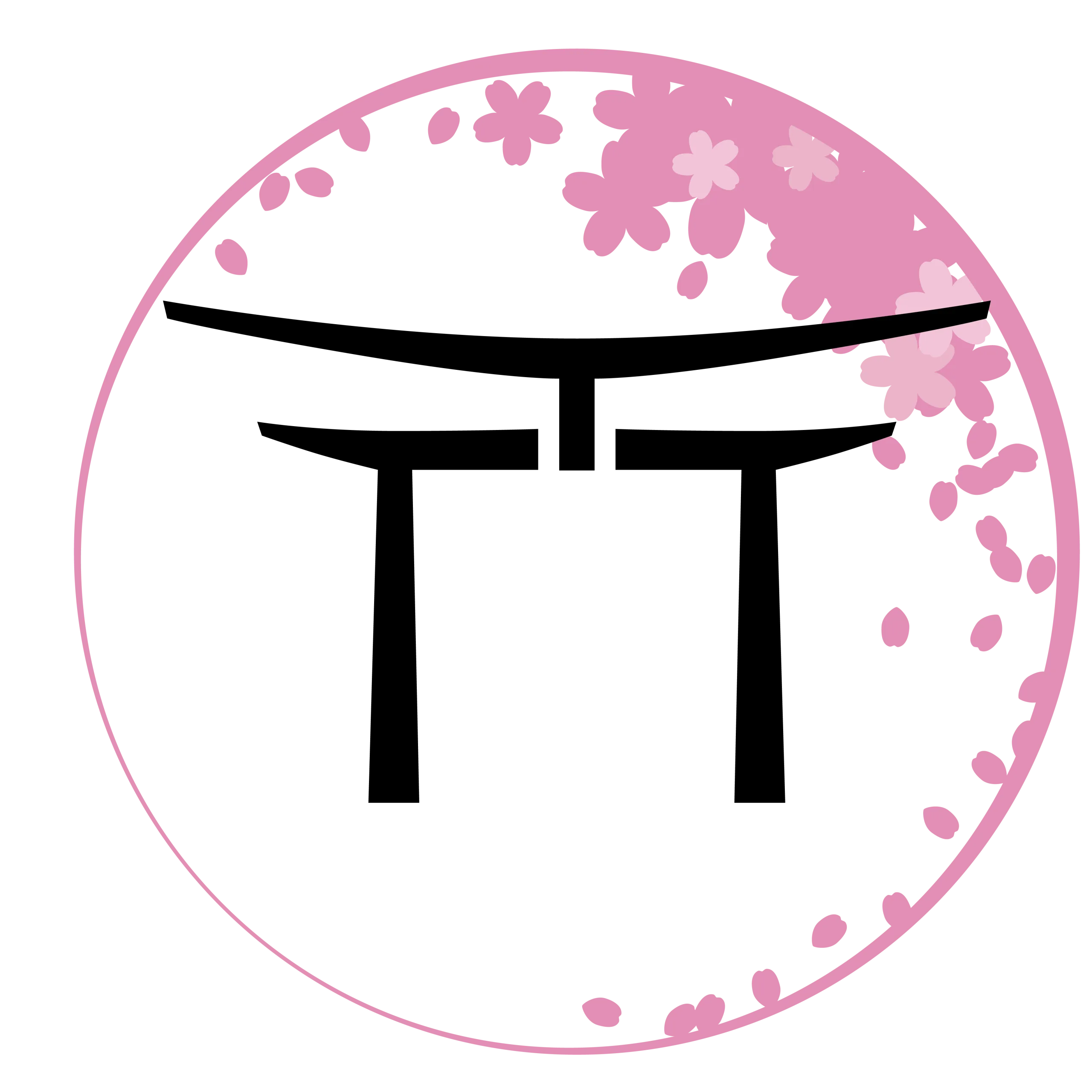Postpartum Food in Japan: What I Ate After I Gave Birth
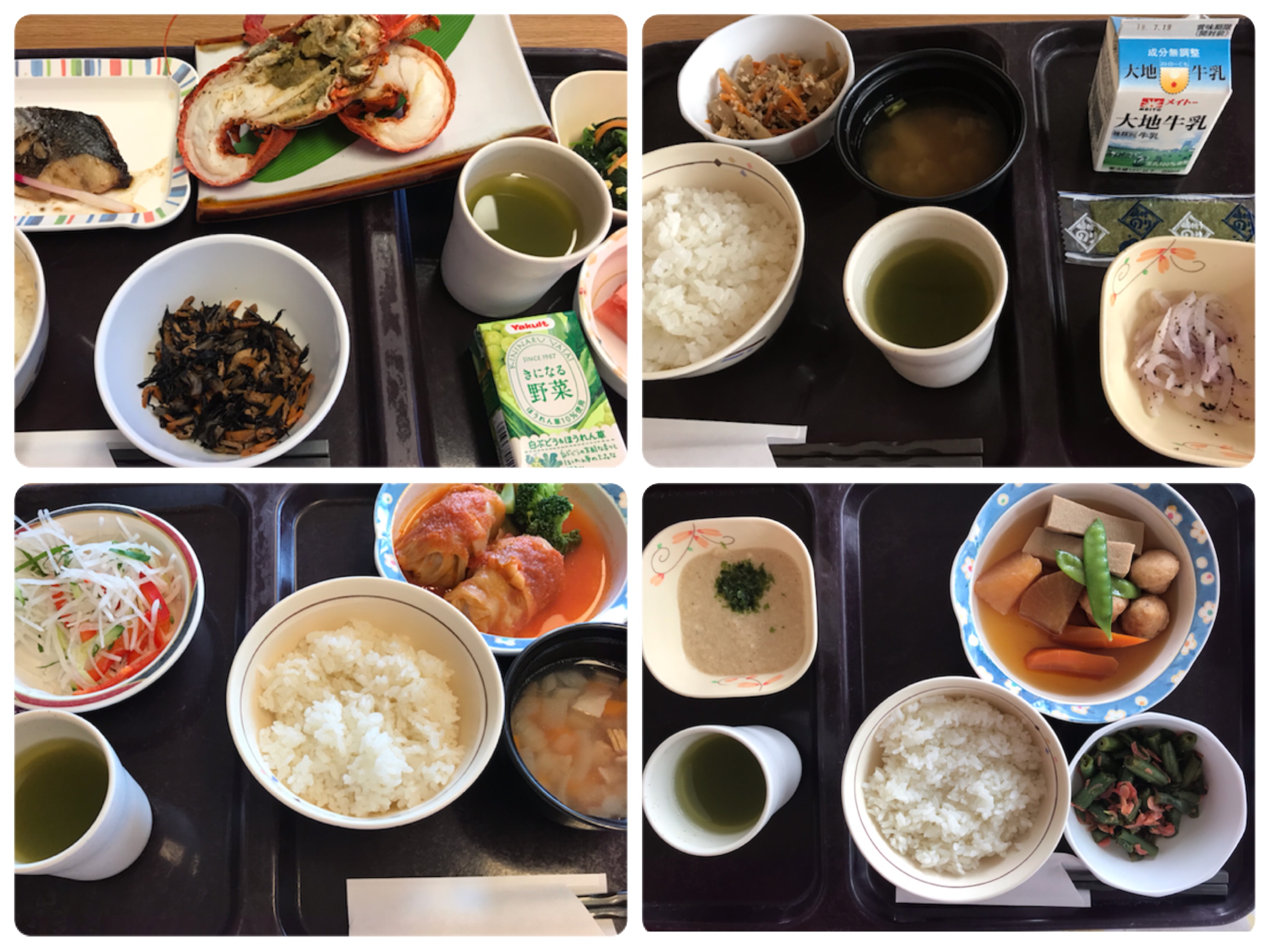
Last Updated on September 29, 2025 by Kay
This post may contain affiliate links, meaning I may earn a small commission on any purchases through those links at zero additional cost to you. Whatever I make goes to keeping this website running and I am forever grateful for the support. See my Privacy Policy for more information.
Food is an important part of Japanese culture, so it’s no surprise that expectant mothers look forward to what they will eat after they give birth.
Pregnancy magazines and maternity clinic websites in Japan highlight the types of meals women get postpartum in an attempt to entice women to choose to have their baby at a particular clinic. Women who have given birth in Japan also post photos of their luxurious hospital meals on social media, which look just like something you would get at a fancy restaurant.
This is quite different from the West, where hospital food is something inpatients normally don’t look forward to. I often hear about people outside of Japan being envious, some commenting that they wish they had given birth in Japan or had the opportunity to do so.
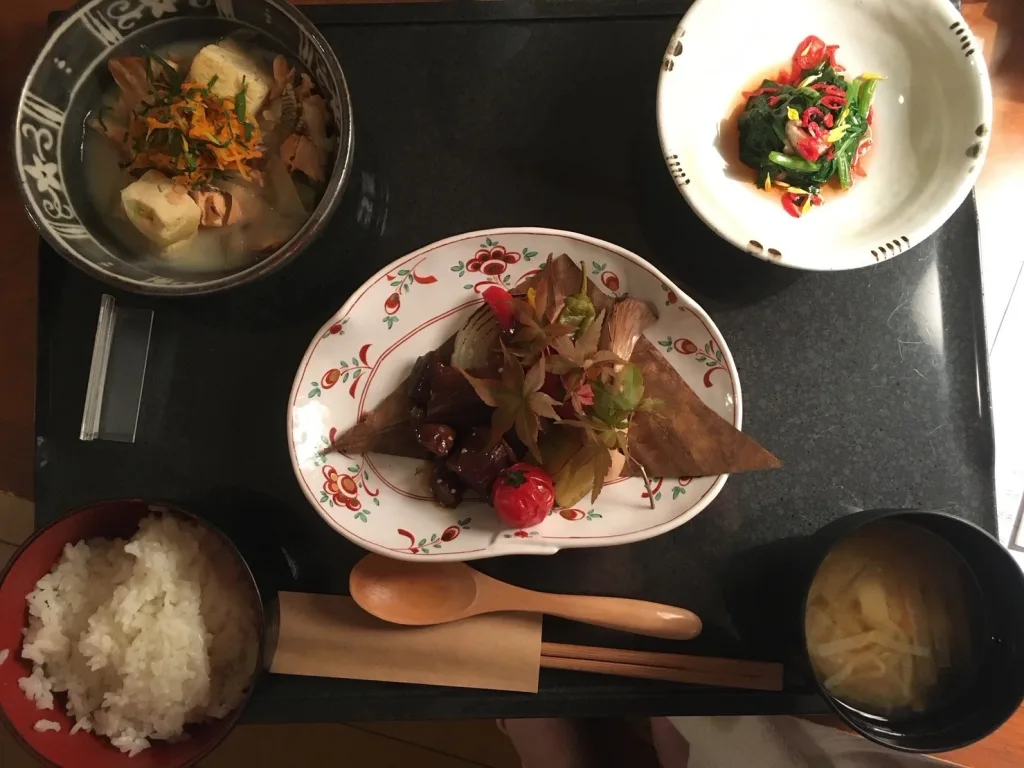
So why are these meals so fancy?
Well, postpartum meals in Japan are a way to reward a mother for all the hard work she has put into growing a human and then bringing them into the world. In fact, mothers also get a celebratory meal that is especially elaborate, usually featuring Japanese spiny lobster (ise ebi).
Japan is also a very health-conscious country, so although these meals are like something you would get at a restaurant, they are made by keeping nutrition in mind. In particular, they use ingredients that help the body recover and also encourage breastmilk production.
My Experience with Postpartum Food in Japan
The clinic in Tokyo where I was supposed to give birth was known for having fantastic meals and as I am not a fan of seafood, they were able to adjust the menu to suit my picky tastes.
I couldn’t wait to have freshly baked bread, pasta, and Salisbury steak, but unfortunately, plans ended up changing and at the last minute, I was admitted to a nearby public hospital for high-risk cases.
Since I had been admitted very suddenly, I was unable to choose between Western meals and Japanese meals and was given purely Japanese food. And given that I am not a fan of fish, it was far from ideal. These meals were also made specifically for ICU inpatients, which meant being healthy to the point of being flavorless. However, I was almost fully recovered by the end of my stay, and I strongly believe the food played an important role for that to happen.
For those of you who are interested, here is some of what I ate during my stay at a hospital in Japan after I gave birth.
(I apologize if some of the pictures are a bit crooked, I couldn’t move much because of my C-section.)
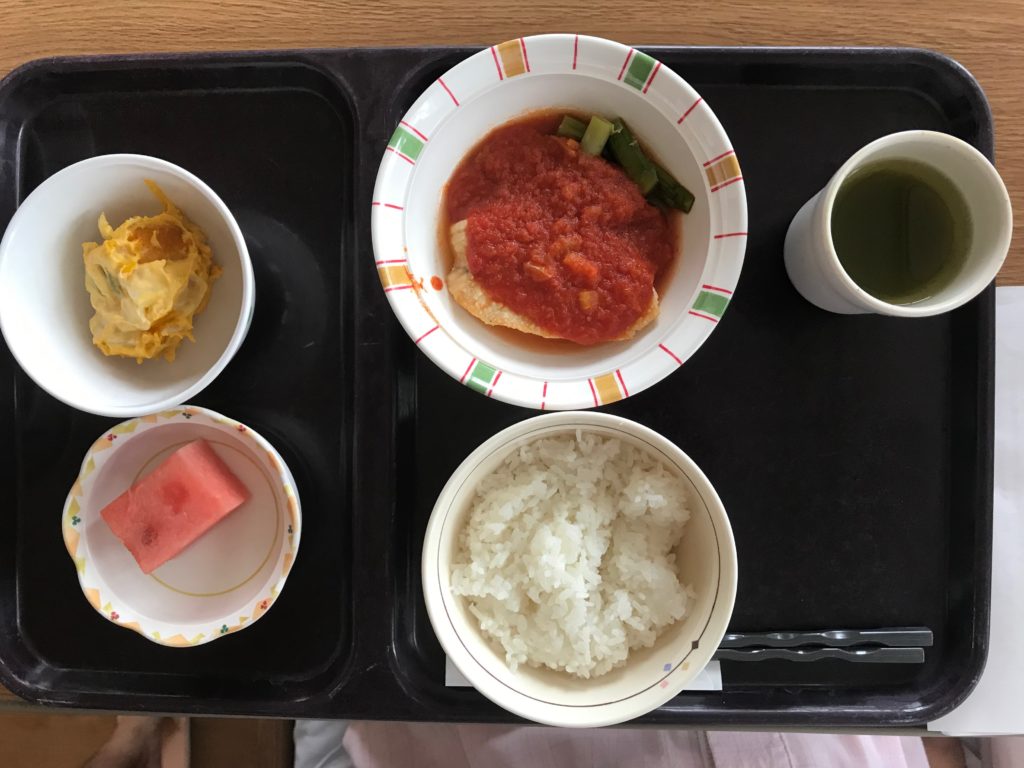 Fish in a tomato sauce, pumpkin salad, watermelon, rice, and green tea.
Fish in a tomato sauce, pumpkin salad, watermelon, rice, and green tea.
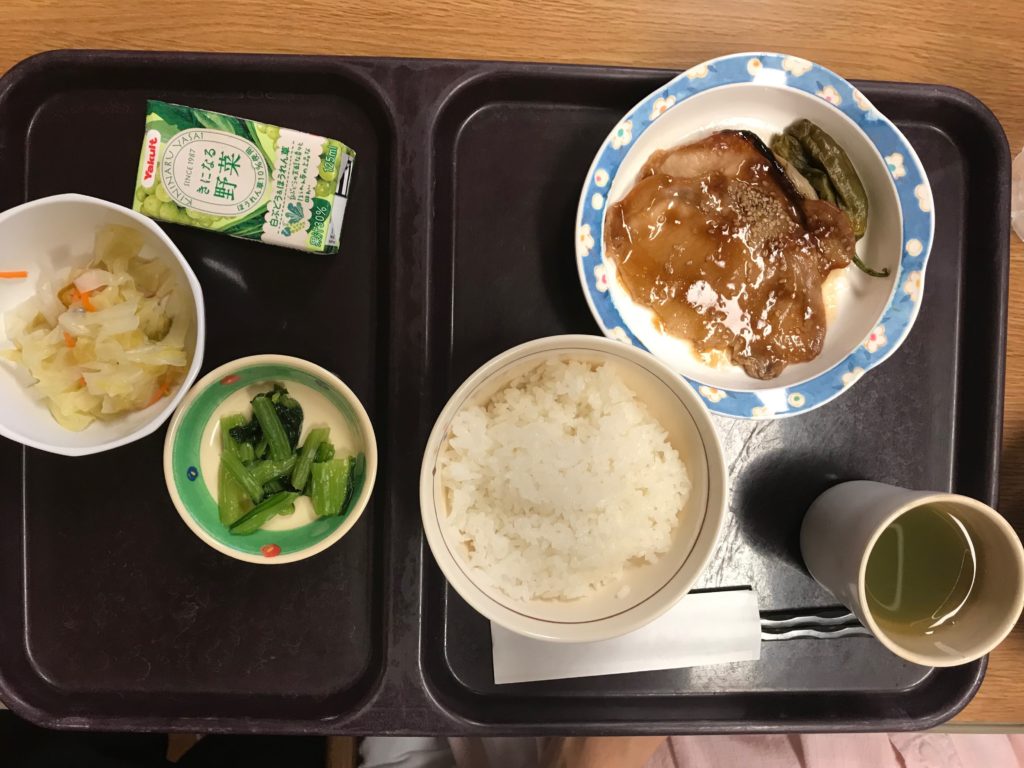
Ginger pork with shishito, pickled vegetables, vegetable juice, rice, and green tea. The ginger pork was actually really fantastic and probably the best thing I ate during my stay.
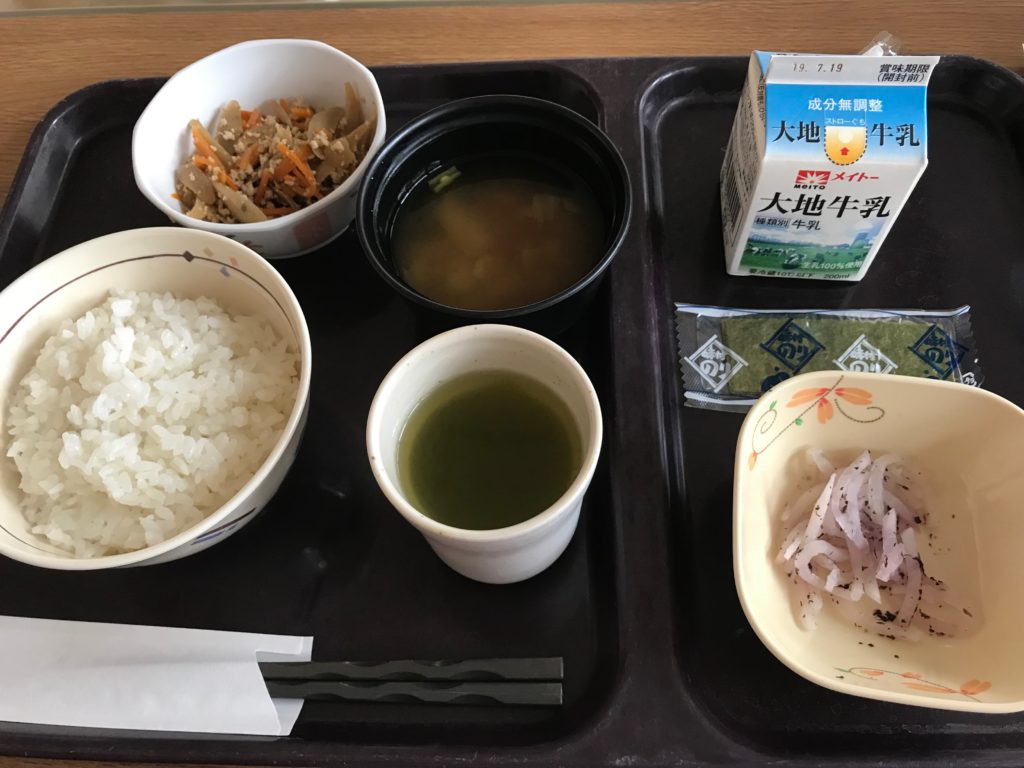
Bamboo, carrots and tuna, miso soup, pickled radish, milk, rice, and green tea.
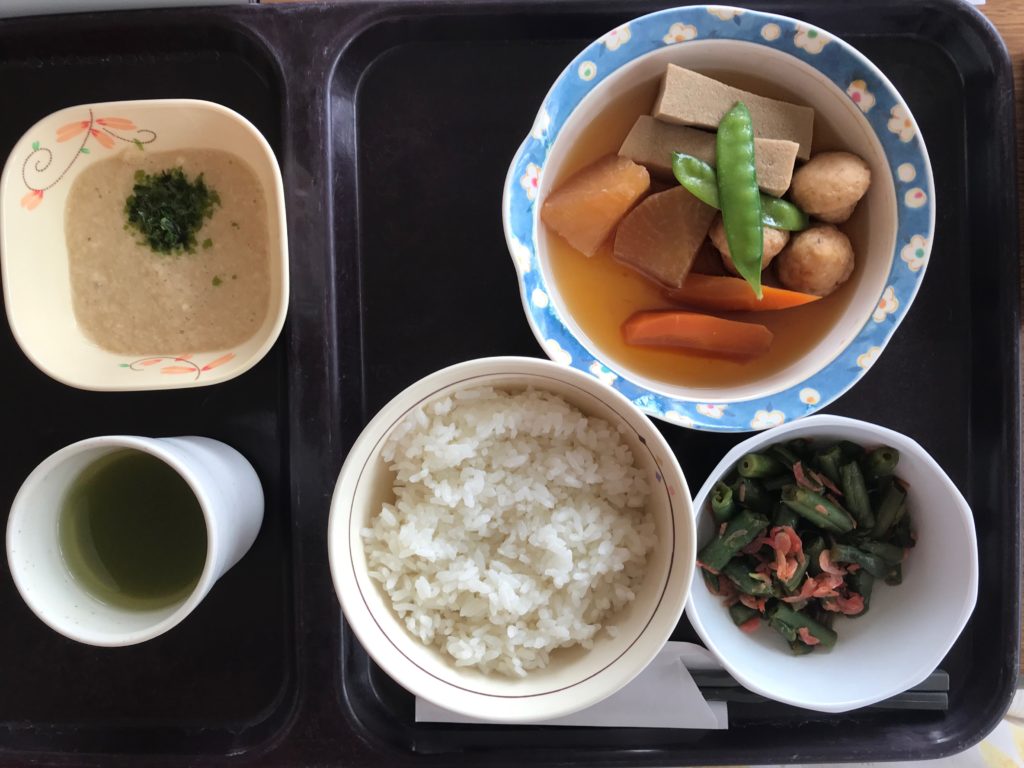
A cold soup, simmered vegetables, fish balls and tofu, green beans with salmon, rice, and green tea.
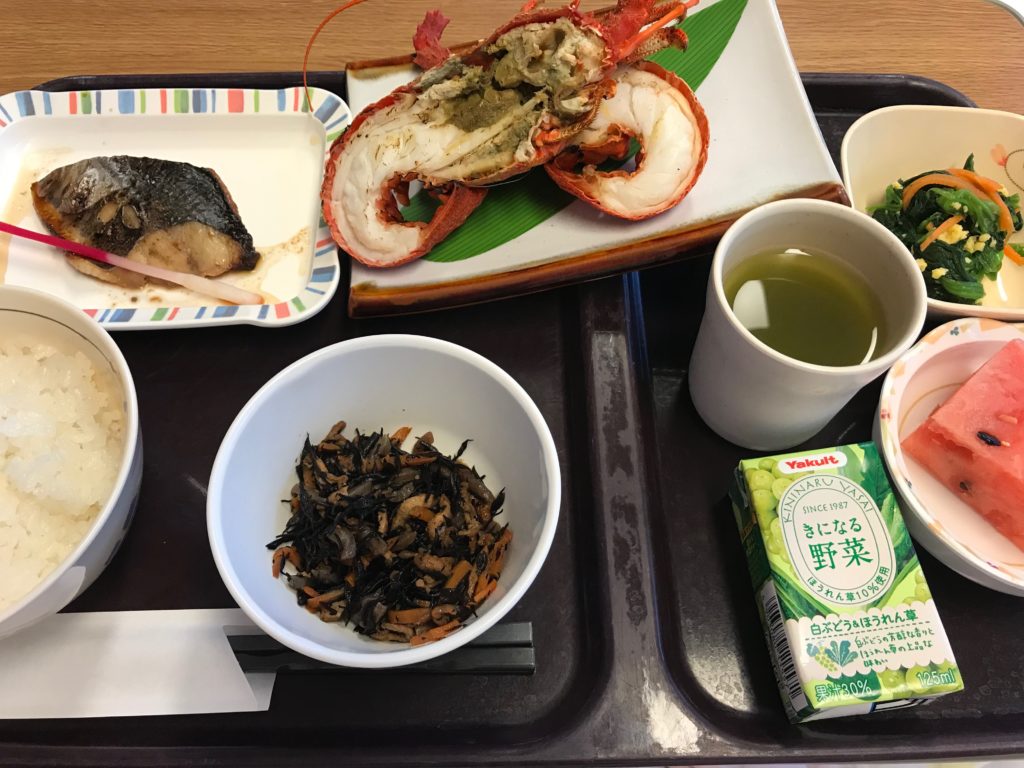
In Japan, women are given a “birth celebration meal” that consists of luxurious food. This was mine: Isei ebi or Japanese spiny lobster, fish, spinach, watermelon, vegetable juice, hijiki, rice, and tea.
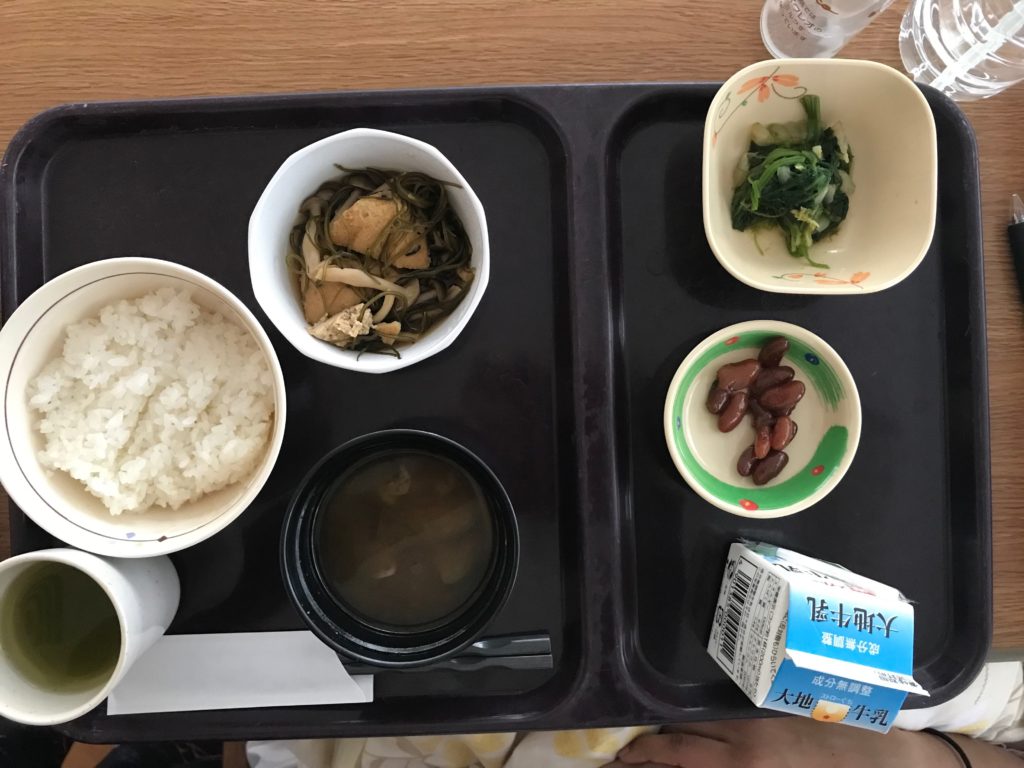
Konbu (seaweed) and fried tofu, spinach, kidney beans, miso soup, milk, rice, and green tea.
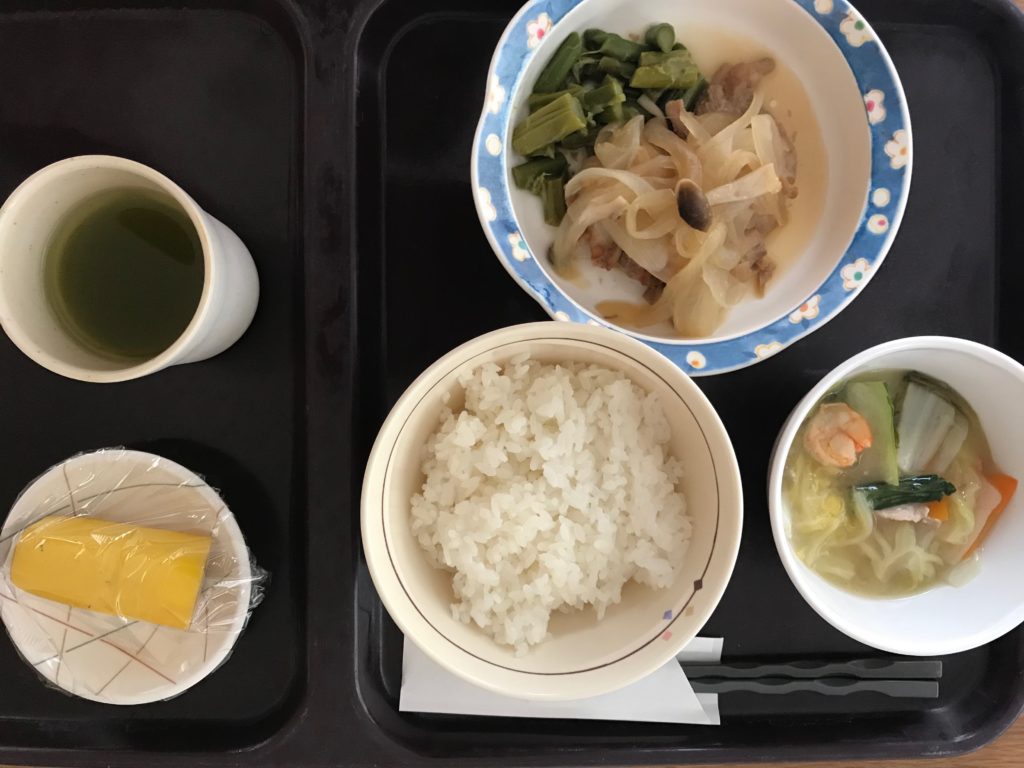
Boiled asparagus, chicken, mushrooms and onion, a Chinese-style vegetable dish, banana, rice and green tea.
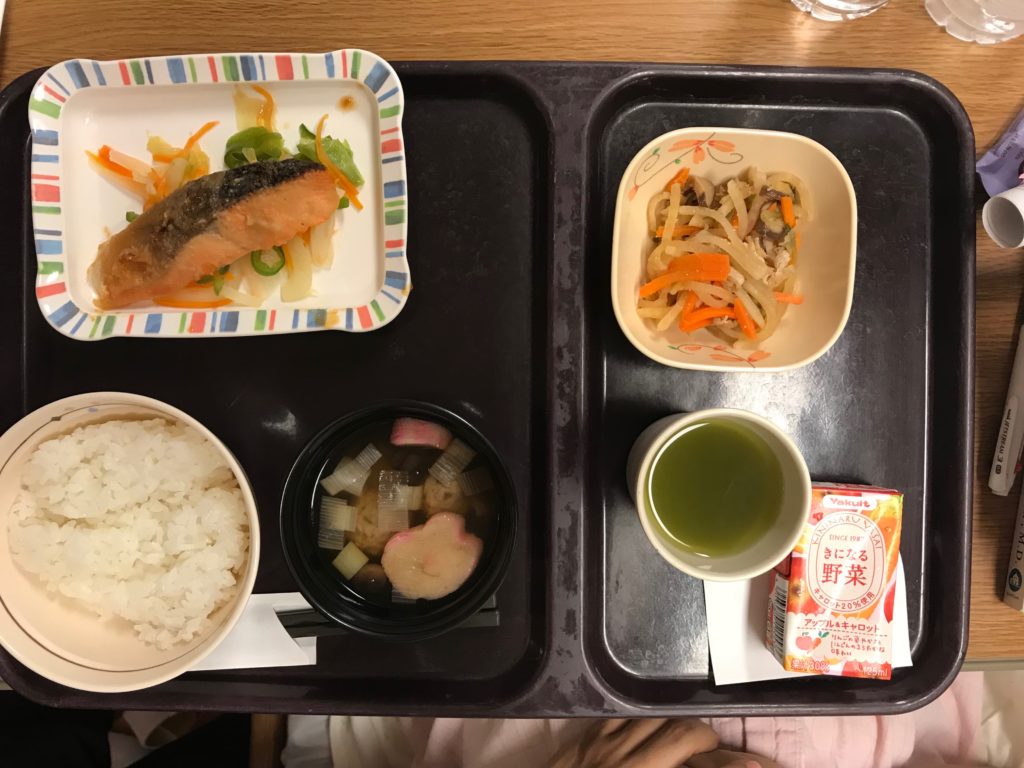
Salmon, miso soup, pickled vegetables, vegetable juice, rice and green tea.
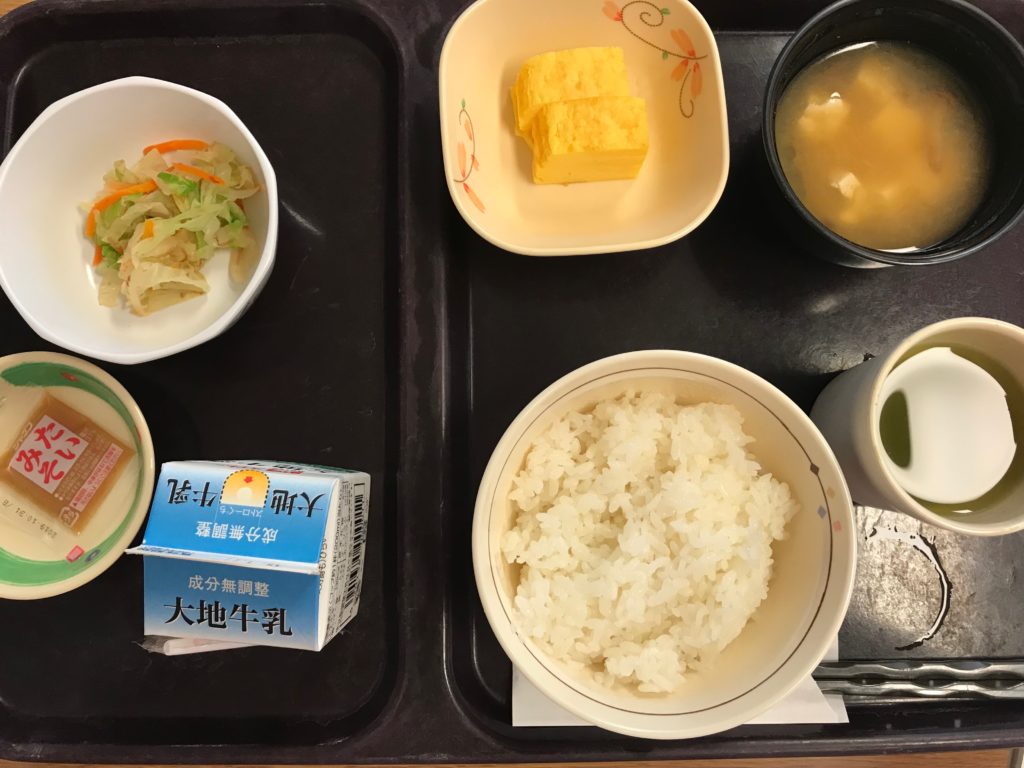
Pickled vegetables, tamagoyaki (egg), miso soup, milk, rice and green tea.
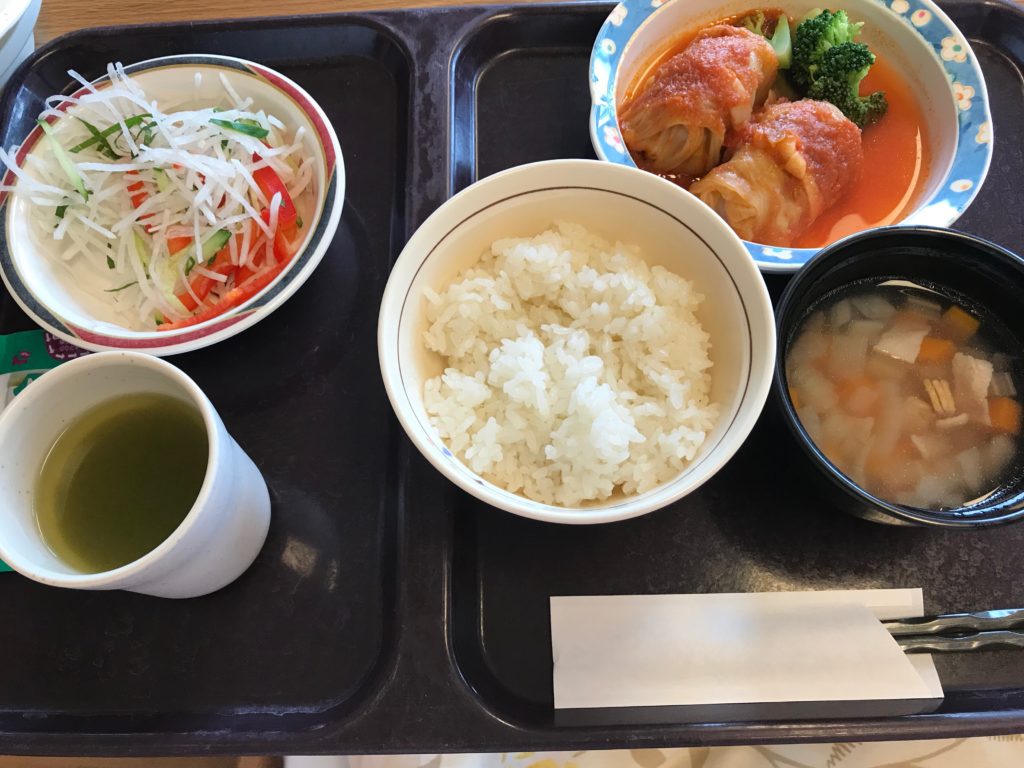
Radish, cucumber and red bell pepper salad, rolled cabbage, soup, rice, and green tea.
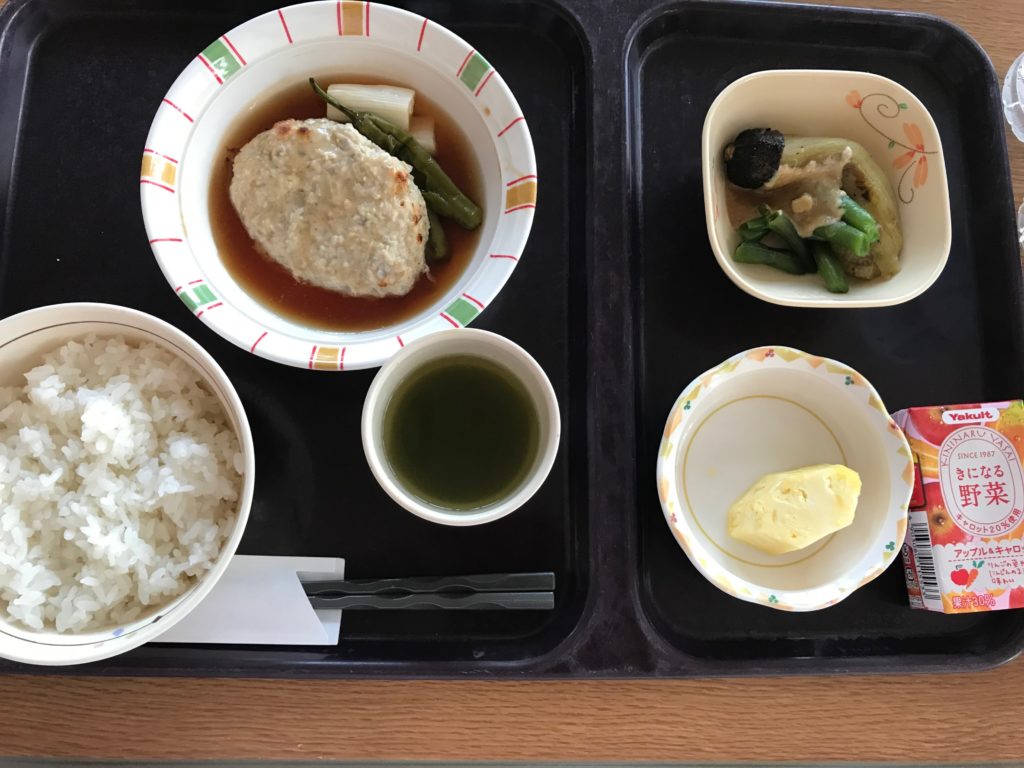
Chicken hamburger patty, stewed eggplant and green beans, pineapple, vegetable juice, rice, and green tea.
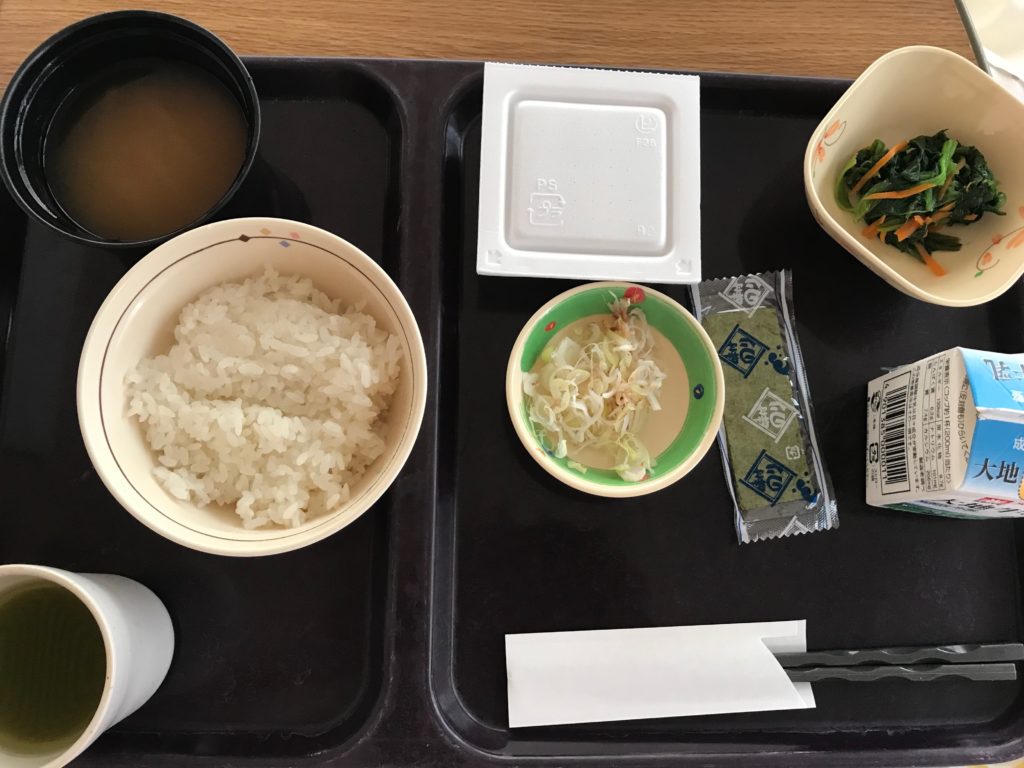
Natto (fermented soybeans), spinach, green onion (for the natto?), dried seaweed, milk, miso soup, rice and green tea.
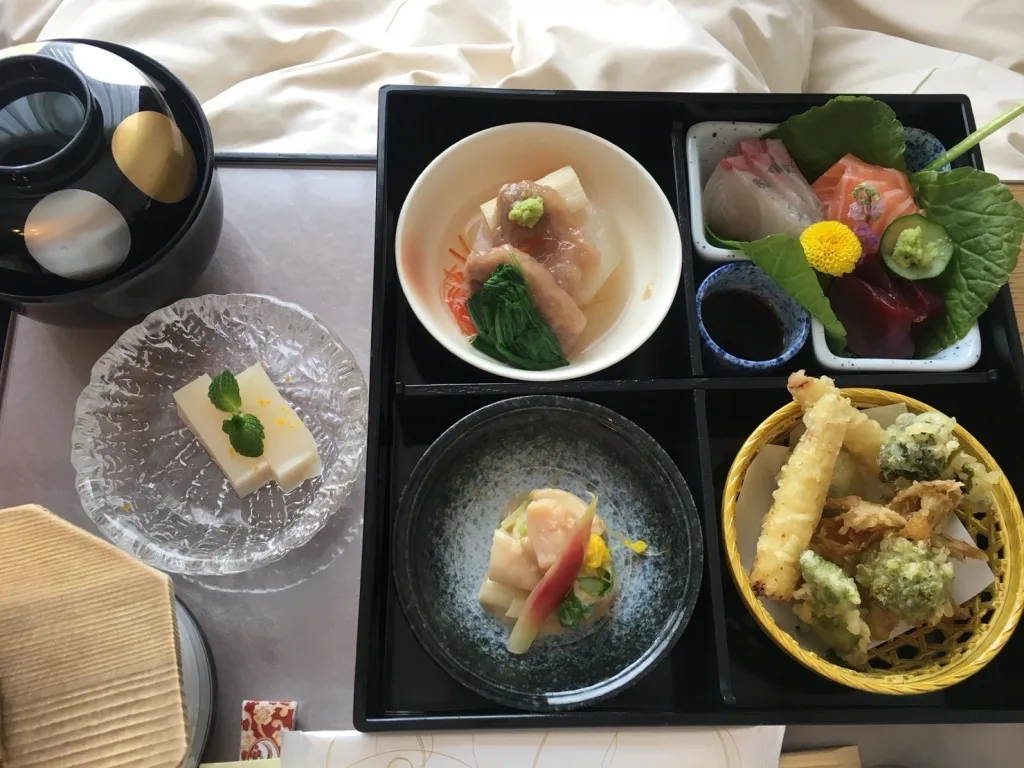
Now let’s compare all of that to the meal above, which my friend in Osaka got after she gave birth at a clinic rather than a public hospital. Sashimi, tempura, pickled vegetables, miso soup — I’m so envious!
So there you have it! What do you think about these postpartum meals in Japan?

